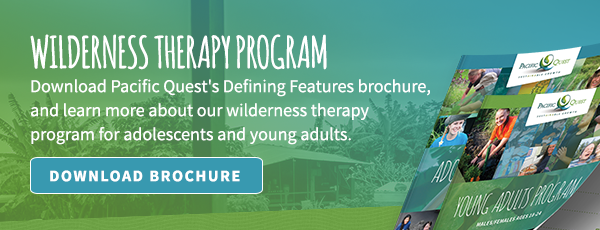Adolescent and teen years are crucial for developing the skills we need to cope with difficult times in our adult lives. Studies have shown 75 percent of lifetime mental disorders first show signs before the typical college age range of 18-24. Being watchful of the early signs before your child or teen reaches this age could mean they get the help they need, when they need it, so they can continue on to become happy, healthy adults. Various rites of passage—from reaching adolescence, to entering high school to finally leaving the nest—all come with different challenges.
Early Adolescence and Social Anxiety
In early adolescence, your child is struggling to become an active participant in all areas of their life. School is becoming more stressful, and developing social skills is more pertinent to his/her well-being than ever before. Between the ages of 13-15 is the most common time for Social Anxiety Disorders to begin affecting daily life., During this time, adolescents haven’t yet developed the ability to properly express their emotions, so depression and anxiety may look more like irritability or angry outbursts without any particular trigger. It’s never too early to reach out for help if you are seeing any of the following signs:
- Excessive sleep
- Anger or Aggression
- Aversion to being in social circumstances
- Overly emotional outbursts with no warning
- Complaints of boredom
- Acting younger than they are
High School: Learning from Mistakes
Once a child has made the transition into high school, they may feel as though their life is becoming less and less in his/her control. Teens can deal with this feeling very different ways. Impulsive behavior becomes more common as teens test the boundaries of what they can and can’t get away with. Impulsive behavior can be normal as long as your teen is merely testing the waters and not jumping head first into extreme and/or risky behaviors. When a teen continues to make the same decisions despite the consequences, impulsive behavior can turn into self-destruction. Eating disorders are another common way teens attempt to take control of at least one part of their lives. Forty-three percent of those diagnosed with eating disorders report an onset of these disorders between the ages of 16-20. Watch for symptoms of these issues throughout your teen’s high school years:
- Persistent worry about physical appearance
- Excessive exercise
- Making excuses not to eat
- Being overly aggressive
- Making the same mistake multiple times
- ‘Borrowing’ things without asking
- Risky, impulsive behavior
Pressures of Beginning a New Life – Magnify Issues
By the time your teen has left home, any issues that may have developed in earlier years may now pose greater issues. The early stages of adulthood (between 17-22) are common ages for anxiety to resurface. Seventy-five percent of those who encounter any anxiety disorder experience their first episode by age 22. As teens begin to live their lives without the daily support of their parents, everyday tasks can become daunting. Depression, anxiety, eating disorders and impulsive behavior that may have gone untreated during adolescence may begin to have a much more serious impact. If you see any of these more serious symptoms, taking action is more important than ever:
- Excessive drinking or smoking
- Secretive behavior
- Alienating themselves from loved ones
- Poor physical hygiene
- Extreme weight gain or loss
The journey to adulthood is riddled with bumps and obstacles, but armed with the right information, many of the major issues your child, teen or young adult could face can be assessed before they become dangerous. It’s never too late to seek help for your child and Pacific Quest is here to help. We offer Wilderness Therapy Programs for both adolescents and young adults, and have experts trained in helping youth of all ages through the challenges of adolescence and young adulthood.
